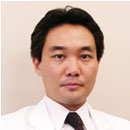
Lifestyle-related diseases, such as obesity, diabetes, and hyperlipemia, can be a risk factor for the development of thrombosis. As I mentioned in the previous essay, we need to move our legs frequently and prevent lifestyle-related diseases in order to avoid thrombosis. In our nation, Japan, the increasing lifestyle-related diseases are becoming a serious social problem. A survey conducted in 2010 shows that obese individuals (with BMI of 25 and above) account for 30.4% of the total adult males and 21.1% for females. Additionally, the National Nutrition Survey, carried out by the Ministry of Health, Labor and Welfare in 2007 indicated that 8.9 million were estimated to be diabetic, and 13.2 million were potentially at risk for diabetes. Why has Japanese society changed in this manner? Some possible factors include a variety of changes in our patterns of living and eating habits. One of the reasons is that people now have less walking opportunities because of a well-developed transportation system, and another is due to an increasing trend of eating disorders and decreased popularity of traditional Japanese food.
Asian people, including Japanese citizens, were traditionally agricultural people. Their lives were based on rice cultivation in a climate with high-temperatures and humidity, and they consumed protein derived mainly from plant-based sources. But Japanese eating habits have changed recently and more and more animal proteins, such as meat and beef are now being consumed. In the past 50 years, average daily energy intake for Japanese people has barely changed, remaining steady at around 2000 kcal. But the rate at which fat is accounted for has increased from 6~7% to 26~27%. This is the very reason why lifestyle-related diseases have increased significantly. Therefore, I would like to emphasize the importance of re-examining the benefits of a traditional Japanese diet.
Kaibara Ekiken was alive during the Edo period, as a doctor, Confucian scholar, and also a scholar of herbalism. Among his many works is a famous “Yojo kun” (precepts for the preservation of health), in which he wrote about how we can maintain good health and prevent disease by practicing ideal eating habits, including eating moderate portions, preferring light flavors, avoiding fatty foods and chewing food well, as examples. These practices were applicable to preventing lifestyle-related diseases for adults. The government has also recommended keeping a good balance in diet and moderate exercise, as preventive measures against disease. The Shokuiku (dietary education) Basic Act came into force in 2005 in Japan, which promotes healthy eating habits and gives examples of well-balanced diets.
Shokuiku (dietary education) is the foundation for living, and its ultimate purpose is to promote raising children who practice healthy dietary habits. Thus, it is to promote good health management of the body and mind, and to prevent disease through positive eating habits.
I would like to emphasize the importance of assessing our eating habits. In the next essay, I am going to talk about the benefits of Natto, a representation of traditional Japanese foods.

Masahito Hitosugi, M.D., Ph.D.
Professor, Department of Legal Medicine
Shiga University of Medical Science
Education:
Graduate School of Medicine, Jikei University, Tokyo, Japan, M.D., Ph.D. (Dr. of Medical Science), 2000.
Residency:
Kawasaki Municipal Hospital (Internal Medicine), Kanagawa, Japan, 1994-1996.
License and Certification:
License of Medical Doctor (No. 367818), Japan Ministry of Health, Labour and Welfare, 1994.
Authorized Dr. of Medical Autopsy (No. 7189), Japan Ministry of Health, Labour and Welfare, 1999.
Authorized Dr. of Forensic Medicine (No. 100), Japanese Society of Legal Medicine, 2002.
The 1st grade of the Examination of Proficiency in English for Medical Purposes (No. 3), The Japan Society for Medical English Education, 2008.
・No.2 What causes metabolic syndrome?
・No.1 Why has metabolic syndrome been drawing greater attention?
・No.6 Health foods to prevent thrombosis
・No.5 Natto, a preventive measure against thrombosis
・No.4 Improving eating habits to prevent thrombosis
・No.3 Have You Heard of Traveler’s Thrombosis?